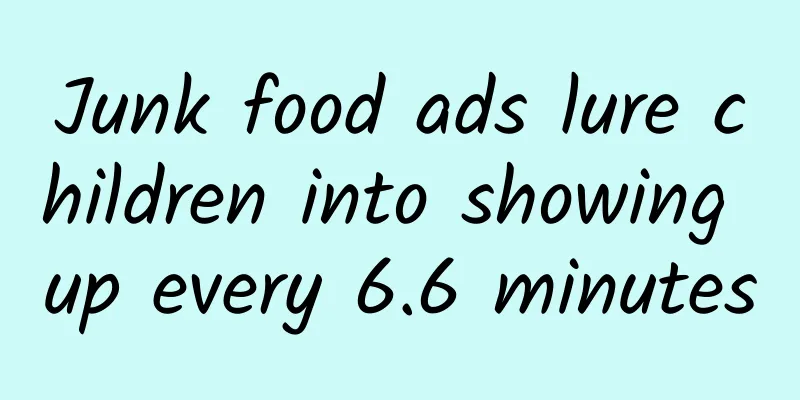Junk food ads lure children into showing up every 6.6 minutes

|
"Eating with TV" has become the eating habit of many modern families. The foods featured in advertisements have also become the "food guide" for children. However, the Children's Welfare Foundation released a report on its investigation of junk food advertisements during the summer vacation, and found that when children were watching cartoons, there was an average of one junk food advertisement every 6.6 minutes. During mealtimes, the frequency of junk food advertisements was 1.6 times that of other periods. Legislator Wang Yu-min held a press conference today with the Children's Welfare Association and parent-child representatives, emphasizing that children receive a lot of junk food advertisements on TV every day, which is reflected in real life by drinking can of sugary drinks and eating French fries and potato chips one after another. The potential obesity crisis is worrying. Chiu Ching-hui, head of the R&D department of the Children's Welfare Foundation, pointed out that during this summer vacation, the foundation monitored advertisements in popular cartoon programs that children love to watch. The "2012 Junk Food Advertising Survey Report" found that Taiwanese children watch an average of 8,325 junk food ads a year, and these ads are broadcast more frequently on holidays than on weekdays. When children are watching popular cartoons, there is an average of one junk food ad every 6.6 minutes. During mealtimes, the frequency of junk food ads is 1.6 times that of other times. In addition, many children have the habit of eating while watching TV, and repeated brainwashing will strengthen their identification with junk food. Legislator Wang Yu-min said that developed countries pay attention to the problem of obesity among their citizens and have begun to regulate junk food through laws and policies. For example, on September 13 this year, New York City banned the sale of soda and sugary drinks over 470 ml through the catering industry; Denmark began to levy a "fat tax" on its citizens in 2011; and the French government also imposed a 1% "obesity tax" on each can of sugary drink. In addition to junk food advertisements, it is common to see many catering and fast food operators using "free gifts" as a means of attracting children to buy. According to the Center for Science in the Public Interest (CSPI), using giveaways as a means of marketing junk food is one of the reasons for the rising number of childhood obesity and should be banned immediately. Wang Yumin believes that for the health of the next generation, it is necessary for the government to moderately regulate the advertising and marketing of junk food. She said that during this session, legislative amendments will be pushed to restrict the promotion or advertising of junk food on children's channels and programs, and to prohibit businesses from marketing junk food by giving away gifts. |
<<: Three tips for checking each batch of imported hairy crabs and eating them safely
>>: After the Mid-Autumn Festival, 60% of people develop mooncake face and their weight increases
Recommend
How to prevent endometrial tuberculosis
Nowadays, women are very impulsive, so they have ...
What are the topical drugs for cervical erosion?
Topical medications for cervical erosion mainly i...
Are you using the right method to lose weight during the menstrual cycle? Chinese medicine practitioner Luo Peilin revealed: "This time" after menstruation is the most effective
Smart women know how to use their menstrual cycle...
Watching TV will make you fat! Tragedy with rice, eat 694 more calories
The Korean drama "My Love from the Star"...
What harm does cervicitis bring to female friends in daily life?
Cervicitis is a common gynecological inflammation...
What are the symptoms of adenomyosis cancer?
Adenomyosis doesn't sound that scary. But if ...
Daily precautions for patients with secondary amenorrhea
The causes of secondary amenorrhea include endome...
Detailed analysis of the symptoms of vaginitis
The symptoms of early vaginitis should be a commo...
What is the natural enemy of uterine fibroids? Introduction to the natural enemy of uterine fibroids
What is the natural enemy of uterine fibroids? In...
Detailed analysis of common knowledge on the treatment of cervical hypertrophy
If cervical hypertrophy cannot be discovered in t...
What circumstances lead to the occurrence of functional uterine bleeding?
Whether a woman's menstruation is normal is o...
What are the symptoms of moderate cervical erosion? What is the best way to treat moderate cervical erosion?
Mild cervical erosion only causes an increase in ...
What are the dangers of hyperprolactinemia?
Hyperprolactinemia is a hypothalamic-pituitary-go...
What are the effects of menstrual disorders?
What are the effects of menstrual disorders? Many...
Anorexia and bulimia can be cured by self-monitoring to reduce loss of control
In psychiatric outpatient clinics, anorexia and b...









